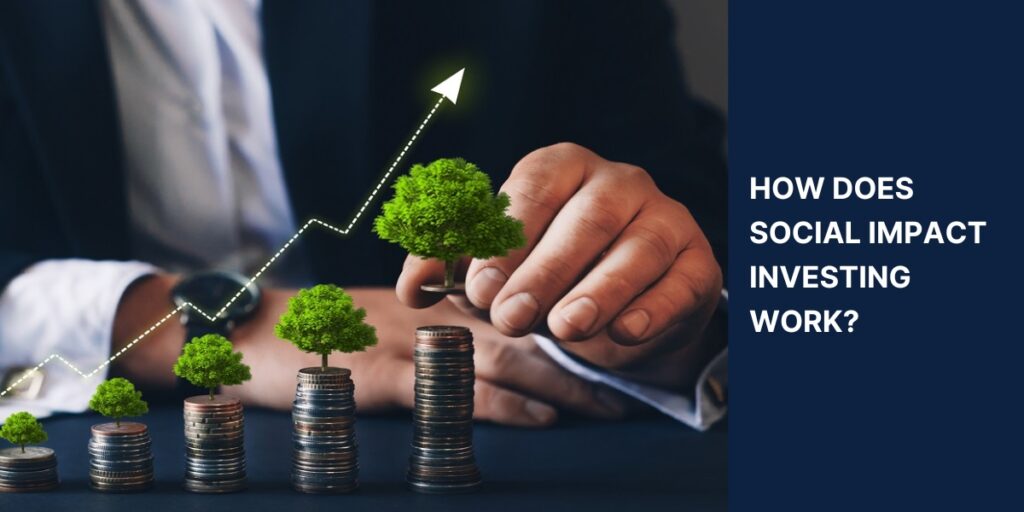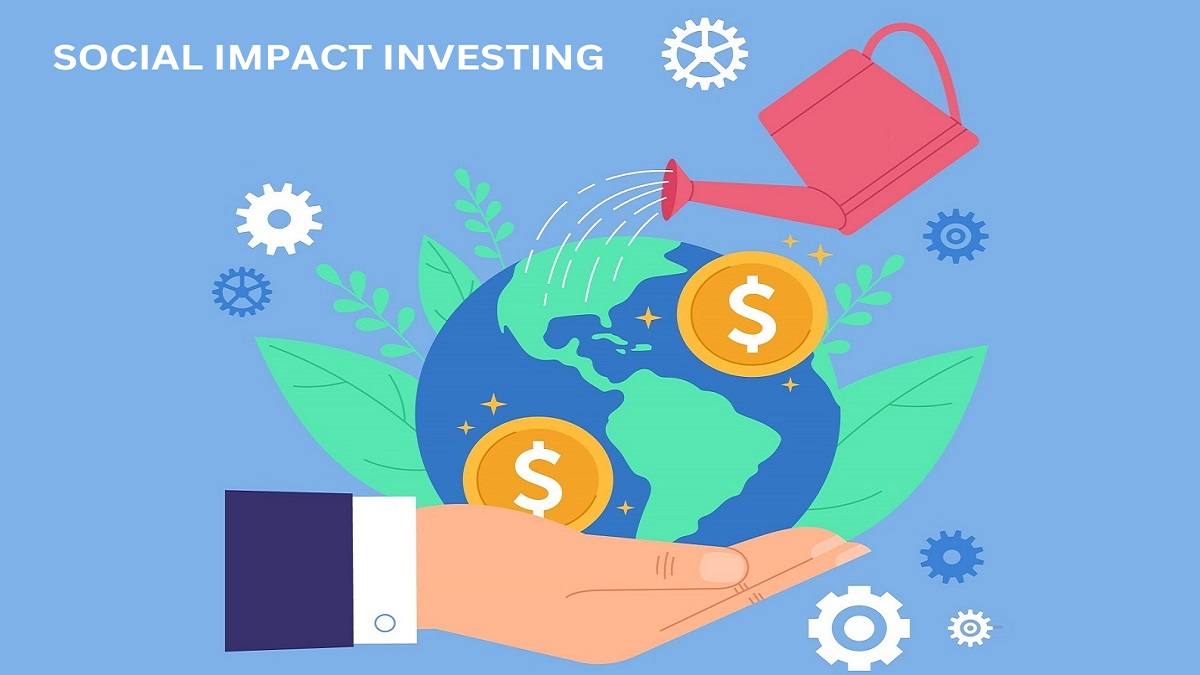What is Social Impact Investing? Everything To Know!
Social impact investing aims to generate positive social or environmental impact alongside financial returns. It is growing rapidly as more investors recognize the opportunity to direct capital towards tackling social and environmental issues innovatively and effectively. This article provides an in-depth overview of social impact investing, the market, strategies, assessment approaches, challenges, sectors, and how to get started.
What Is Social Impact Investing?
Social impact investing refers to targeted investments that intend to generate measurable beneficial social or environmental impact in addition to financial returns.
The Global Impact Investing Network (GIIN) defines impact investments as “investments made with the intention to generate positive, measurable social and environmental impact alongside a financial return.” Impact investments actively aim to create social or environmental benefits through investment.
Social Impact Investing: How it works?

Social Impact Investors provide capital to businesses, funds, organizations and projects with the explicit goal of generating social impact alongside financial returns. The focus is on proactively driving social or environmental solutions, not just minimizing harm.
The impact is actively measured and managed. Investments incorporate impact assessment frameworks to quantify impact performance and inform management. This enables accountability and improvement.
Financial returns can range from concessionary to market-rate or even market-beating. Impact-driven does not mean low returns. Investments can deliver competitive risk-adjusted returns across the spectrum.
What Are The Benefits Of Social Impact Investing?
Some key benefits of social impact investing include:
- Achieve positive change on social, economic and environmental issues. Impact investments help channel more capital towards addressing pressing societal and ecological challenges.
- Meet the needs of underserved communities. Innovative investments can extend essential goods and services to disadvantaged populations often left behind.
- Catalyze new solutions and markets. Impact capital can validate and scale creative business models driving systemic change.
- Attract more capital to priority impact areas. Demonstrating success can draw greater investment to maximize impact over time.
- Align investments with values. Impact investing allows investors to make money while making a difference.
- Manage risks and increase resilience. Solving global issues like inequality and climate change mitigates risks.
- Meet investor demand for responsible investing options. Interest continues to grow in ethical investment choices.
What Are The Different Types of Social Impact Investments?
Social Impact Investments has various structures like impact funds, green bonds, and direct investments in social enterprises across asset classes, including fixed income, public equities, private equity, debt, hybrid models, and specialised products. The key is intent to generate social/environmental impact and financial return. The various structures and asset classes for social impact investments are:
1. Debt
Debt instruments such as loans, notes, bonds, impact-linked loans or social impact bonds can direct capital to social purpose organizations. Debt is often used for financial inclusion, community development, housing, and other sectors tackling basic needs that tend to rely more on debt financing. Repayment gives lenders predictable returns with lower risk than equity.
2. Equity
Equity refers to shares in impact-driven businesses such as healthcare startups and renewable energy companies. Equity provides growth capital and shared upside for the investor. It can also provide risk-tolerant capital to catalyze innovation and scale, as venture capital can propel disruptive business models. Equity allows for more hands-on oversight than debt through shareholder engagement.
3. Hybrid Models
Hybrid models combine the features of debt and equity:
- Quasi-equity – Debt with equity-like features, e.g. revenue share or control rights. Gives lenders some upside and mitigates risk.
- Revenue share – Returns linked to revenue generation by the investee. Aligns investor returns to financial success.
- Variable payment obligations – Outcomes-linked interest rates or repayment terms. Links return to social performance.
- Hybrid Models Enable flexible risk-sharing between investors and investees.
4. Impact Funds
Impact funds are pooled investment vehicles that offer diversified exposure to multiple impact investments across geographies, sectors, and asset classes. This provides a broad diversification of risks. Impact funds are actively managed by specialists, leveraging their expertise in high-impact sectors and structures. The funds can have open or closed-ended structures, providing different redemption options to meet liquidity needs.
5. Specialist Products
Specialist products like blended finance and outcomes contracts facilitate impact-driven partnerships and innovative financing mechanisms. Blended finance involves philanthropic and public investors providing concessionary capital to catalyze private investment into impact areas, reducing risk for commercial investors. Outcomes contracts tie payments to the achievement of agreed social outcomes, improving accountability through outcomes-based financing.
What Are The Social Impact Investment Strategies?
Social impact investment strategies refer to the different approaches and methods that investors can use to intentionally invest their capital in ways that will generate positive social or environmental impact alongside financial returns. Investors can adopt different strategic approaches like:
1. Carve-out
The carve-out approach involves allocating a portion of capital specifically for impact within a broader portfolio. This dedicates a specific pool of assets for impact investing while limiting overall exposure. It allows investors to pilot impact strategies before potentially expanding. The carve-out approach provides a way to test the impact investing approach while containing the risks.
2. Integrated Impact Strategies
With integrated impact strategies, investors incorporate impact investments that align with financial objectives across asset classes. The impact is incorporated throughout the portfolio construction process, and investments are tailored to fulfil a role in the portfolio. This enables holistic integration of impact into overall investment activities in a strategic way tailored to the portfolio.
3. 100% Impact Focus
A 100% impact focus entails constructing a portfolio optimized entirely for impact across all investments. The portfolio is customized to make an impact intrinsic to all investment selection and management. This requires aligning all assets in the portfolio to the impact policy and vision. A 100% approach maximizes impact but also requires the greatest commitment to an impact-first orientation.
| Approach | Description |
| Carve-out | Dedicated pool of capital with discrete impact and return goals |
| Integrated | Impact incorporated within asset classes and aligned to portfolio objectives |
| 100% Impact | Customized portfolio optimized entirely for impact |
The choice depends on factors like investment goals, capital constraints, and vision for impact. Strategies can also evolve over time.
How To Assess Social Impact?
Robust impact assessment is key for credibility and effectiveness. Impact monitoring and evaluation should be integrated throughout the lifecycle of the investment to understand impact performance and inform management decisions. Common approaches include:
1. Frameworks
The UN Sustainable Development Goals (SDGs) provide shared impact categories and priorities that many investors align with. The SDGs were produced through a global multi-stakeholder process and set out 17 priority impact goals for achievement by 2030. This helps investors categorize and select relevant social and environmental objectives to target.
2. Measurement
Tools like IRIS (Impact Reporting and Investment Standards) and GIIRS (Global Impact Investing Rating System) help quantify impact performance. IRIS provides standardized metrics for tracking impact objectives across portfolios. GIIRS rates investments similarly to traditional credit ratings. Such measurement tools enable benchmarking and consistent aggregation of impact results across multiple investments.
3. Impact Reporting
Investors can produce impact reports to assess their achievements, demonstrate accountability, and improve future performance. These reports disclose impact results and key learnings, highlight case studies demonstrating real-world impact, and identify areas for refinement and growth. Impact reporting is crucial for transparently conveying impact strategies and results to stakeholders.
What Are The Challenges in Social Impact Investing?
While the market has matured significantly, some persisting challenges include:
- Lower returns: Impact investments can compete with market-rate returns, but some perceive inherent financial trade-offs. Performance increasingly challenges this perception.
- Limited track record: As an emerging field, many products lack a long track record to demonstrate risk and return. But data grows yearly as the market develops.
- Shortage of opportunities: Investable pipelines may be constrained, especially in less developed markets. Yet deals and products continue to proliferate.
- Impact measurement difficulties: Social and environmental impact can be complex to quantify and benchmark. Standards and benchmarks help address this obstacle.
- Perception of higher risk: Some assume impact investing necessarily involves higher volatility or risk profiles. Risk-return analytics helps overcome generalizations.
However, evidence increasingly challenges these perceptions. With growing track records, benchmarking, and innovative structures, the industry continues to evolve.
The Scope of Social Impact Investing Market
The impact investing market has grown substantially in recent years but still remains a fraction of global assets under management. The current market size is approximately $715 billion in AUM and has demonstrated a compound annual growth rate of 42% since 2013. The investor base includes institutional investors such as pensions, insurers, banks, high-net-worth individuals, family offices, foundations, endowments, development finance institutions, and individual investors.
While the market is global in scale, it has historically been concentrated in the US and Europe but is now steadily expanding into emerging markets as well. Though still in its infancy compared to the broader investment universe, the rapid growth underscores the rising adoption of impact investing strategies by mainstream investors. This growing momentum points to a promising future for channelling private capital towards social and environmental solutions
Sectors for Social Impact Investing?

Social Impact Investing refers to investments made with the intention of generating positive social or environmental change in addition to financial returns. By aligning investments with ethical causes, social impact investing allows investors to use their capital to actively improve society and the environment. The following sectors are well-suited for impact capital:
- Healthcare – Innovative delivery models, telemedicine, preventative health. Better serving underserved communities.
- Financial inclusion – Microfinance, responsible banking, financial health. Expanding access to credit and financial services.
- Housing and property – Affordable and transitional housing, community development. Tackling homelessness and housing shortages.
- Education – Improving access, affordability and quality. Promoting economic mobility through learning.
- Clean energy – Renewables, energy efficiency, storage solutions. Accelerating the transition to clean power.
- Sustainable agriculture – Regenerative farming practices, eco-friendly inputs. Producing food sustainably and ethically.
- …and more! The possibilities are vast, given the breadth of social and ecological challenges requiring solutions. The impact can be pursued across all sectors and asset classes.
How To Get Started As A Social Impact Investor?
A Social Impact Investor is an investor who actively seeks to place capital in businesses and funds that generate measurable beneficial social or environmental impact in addition to financial returns. Those looking to explore social impact investing can take these steps:
- Learn about major social/environmental issues and potential solutions
- Set impact goals based on priorities, passions and vision.
- Allocate capital toward an initial target – maybe 1-5% of the portfolio
- Find managers or investments with credible impact strategies in line with goals.
- Measure and report on impact results and learnings
- Continually refine the approach to increase impact over time
Getting started does not require revolutionizing your entire portfolio overnight. An incremental approach can build confidence and capabilities in social impact investing.
The future of social impact investing
The future of social impact investing points to continued growth and development. This includes increased capital flows as more investors recognize the opportunity, mainstream adoption as impact investing transitions from a niche play to the norm, and wider development of standards for credible impact measurement, management and reporting. There will also be a greater focus on maintaining impact integrity and avoiding “impact washing” as the market scales up. As the ecosystem continues to evolve, social impact investing has the potential to help channel trillions of dollars toward urgent global priorities for people and the planet. The trajectory is clearly positive for this market to keep expanding its scale and sophistication.
The Bottom Line
Social impact investing unlocks capital to tackle social and environmental issues while generating financial returns. As awareness grows, investors have compelling opportunities to chart an impact-driven course. While challenges persist, practitioners’ creativity, transparency and determination continue to push the boundaries of what is possible. The momentum behind aligning investments with values continues to accelerate.

